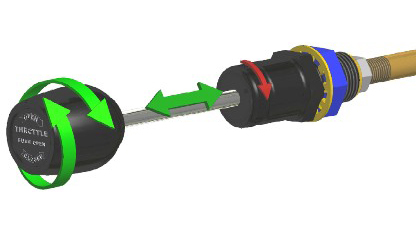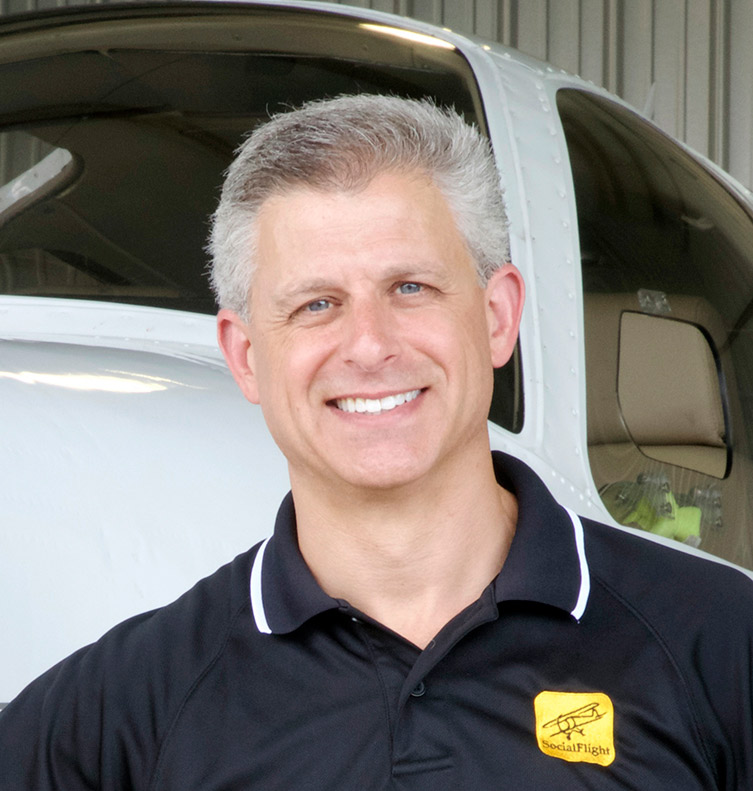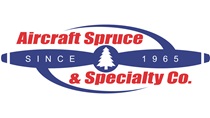Aircraft Maintenance: Engine control cable failures
As pilots, we train to fly our aircraft safely and efficiently using the primary controls at our disposal. This includes the flight controls and the engine controls. Losing a primary flight control can have devastating results, and so a great deal of emphasis in aircraft maintenance is placed on proper maintenance and functioning of those systems. However, the loss of a primary engine control (throttle, mixture, or prop) can have equally tragic consequences, especially over inhospitable terrain or at night.
And so, it always concerns me when I encounter an especially stiff or rough engine control that the owner hasn’t noticed during routine flying. As with many aircraft systems, we are often presented with warning signs before an ultimate failure occurs. In the case of engine control cables, these warning signs should be heeded as seriously as a binding elevator or aileron.
 To better understand how engine control cables work (and how they fail), it’s first important to understand how they are constructed. By design, an engine control cable must provide the pilot with positive and precise control to push and pull the corresponding throttle, mixture, or prop lever on the engine. The cable must also be flexible enough to be routed from the cockpit through the firewall and around the engine. It must operate smoothly while including features to adjust the friction so that it moves when you want it to and stays put when you don’t. Finally, it must be durable to withstand the high-vibration and high-temperature environment of the engine compartment.
To better understand how engine control cables work (and how they fail), it’s first important to understand how they are constructed. By design, an engine control cable must provide the pilot with positive and precise control to push and pull the corresponding throttle, mixture, or prop lever on the engine. The cable must also be flexible enough to be routed from the cockpit through the firewall and around the engine. It must operate smoothly while including features to adjust the friction so that it moves when you want it to and stays put when you don’t. Finally, it must be durable to withstand the high-vibration and high-temperature environment of the engine compartment.
To accomplish these goals, most engine control cables are designed using a braided cable mated to solid, threaded rods at each end. The braided cable is housed within a flexible, spiral metal conduit with an anti-chafe liner between the conduit and cable. You don’t usually see the spiral metal conduit because it is covered in a black sleeve to keep out dust and contaminants. The conduit transitions to a rigid metal tube as it approaches the “business end” of the control at the engine where it houses the solid rod portion of the control. Since most control levers on the engine operate in an arc, this rigid tube is swaged to the flexible conduit with what is known as a “swivel fitting” so that the tube can angle up and down to follow the level arm movement.
I reached out to John Cowan, business development manager at McFarlane Aviation Products, to better understand the issues these cables encounter over time and how best to care for them. Cowan explained that most of the issues occur at bends in the control cable. When the cable housing makes a turn, pushing the control in will cause the braided cable inside to rub against the outside of the bend. Conversely, pulling on the cable will cause rubbing on the inside of the bend. The cable is designed for this. However, over time the vinyl or nylon sleeve will wear through, allowing the cable to contact the spiral conduit. At this point, the cable will rapidly wear and begin to show signs of binding. It’s very important to identify this situation and replace the cable before the wear can progress to the point that it can compromise safety. McFarlane has been proactive in that regard, choosing to utilize a Teflon sleeve design in its cables that is much more resistant to chafing and wear.
There are cases where issues with cable friction are simply a matter of adjustment at the cockpit control end, but these are usually found during installation of the cable. It’s rare to see cable friction change because of a change in the friction control itself.
As with most maintenance tasks, I prefer to look at the necessary evil of having to replace a component as an opportunity to upgrade and gain some benefit from the failure. In the case of control cables, replacement might be a great opportunity to upgrade from a straight cable control to a Vernier-style control that offers more precise adjustments. McFarlane offers control cable upgrades in the form of both standard Vernier and their new “Vernier-Assist” design that does away with the traditional Vernier button and allows both push-pull for coarse movements and twisting for fine adjustments in an elegant design. Unlike standard threaded Vernier controls, this design cannot get jammed if the button is stuck or the pilot forgets to press it in. The pilot can either twist or push/pull at any time. When we encountered a binding throttle cable in our Bonanza, we chose this design for its simplicity and smoothness. No more twisting the knob to get the button to pop out into position, and the throttle is always positioned exactly where we want it.
It’s easy to ignore stiff engine controls, and the internet is full of questionable advice about how to “rejuvenate” an old cable. The reality is that a stiff or binding engine control is sending you a message that it desperately needs attention and may be close to failure. So pay attention, bite the bullet, and replace it before the situation turns into an emergency. You’ll be rewarded by smooth, positive control over your aircraft engine for years to come. Until next time, I hope you and your families remain safe and healthy and wish you blue skies.


